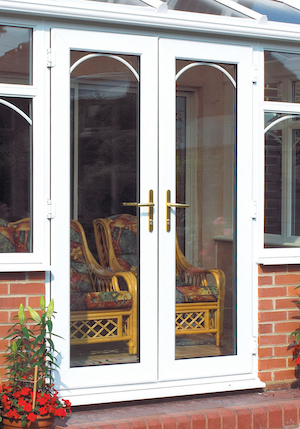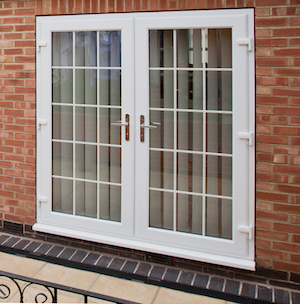What Is French Door Locking Mechanism Replacement And Why Is Everyone …
페이지 정보

본문
 Fixing French Door Locking Mechanism replacement french doors near me (browse this site)
Fixing French Door Locking Mechanism replacement french doors near me (browse this site)When it comes to locking your french doors, you want to ensure they're safe. This can be done by choosing the right lock that will keep your door secure without hindering airflow or altering the appearance of your home.
French door locks are usually a three-point lock that includes flush bolts at the lower and upper edges of each door panel, and an operable door. This system is difficult to break.
Repairing a replacement upvc french doors Door That Won't Lock
If your doors aren't locking or don't latch correctly, it could be a serious safety risk. This could be a sign of a major issue like a damaged locking cylinder. Don't worry, the problem can be fixed with a few easy steps.
The reason a door won't latch is usually because of obstructions that block it. This could be like a small piece of dirt that has gotten stuck in the lock or it could be a problem with the latch itself.
You can confirm if this is the situation by looking at the strike plate (the metal piece that sits against the frame on the inside of the door). If you see a tiny metal tab sticking out of the strike plate, gently tap it with a screwdriver and use a hammer to bend it a bit to allow the hole to be opened in the plate and allow bolts can slide in more easily.
 A seized latch could be due to improper installation or poor alignment. Lubricating the latch can help it function better, but it will not solve issues with how it lines up with the strike plate.
A seized latch could be due to improper installation or poor alignment. Lubricating the latch can help it function better, but it will not solve issues with how it lines up with the strike plate.Installing a strike plate is straightforward in the event that you don't have one. It is necessary to remove the body of the lock from the door (the part that is screwed into the frame of the door) and replace the complete lock assembly with a new one. You'll require a Phillips-head screwdriver and a power drill to do this, but it is not a daunting task.
To make sure that the lock operates as efficiently as possible it is a great practice to regularly lubricate it especially the cylinder. You can use silicone or graphite lubricant to do this. Apply the lubricant on the key and then slowly turn it several times until the cylinder is moving freely.
It is a good idea to invest in a double-cylinder deadbolt for your French doors, instead of simply a standard deadbolt. A simple handle twist lock isn't enough to keep intruders out, and a standard deadbolt with an inside-facing thumb-turn of the door could be beaten by breaking the glass and reaching in through it.
Repairing a French Door that won't latch
The issue is often caused by the latch of the door not interacting correctly with the hole in the strike plate. This is typically caused by sagging hinges however it could be due to the location of the latch or the latch itself. To help identify which one is the cause, use a lipstick or similar marker to see where the latch makes contact with the strike plate. This mark will help determine the source of the issue. For example when the mark is below the strike plate, then it's probably the hinges. If it's above it could be the latch position.
When installing handles or the new lock mechanism on an external French Door it's important that the strike plate and latch holes are aligned correctly. This is particularly true when a door has been closed for a long period of time. During this time, the door may have moved a bit. This is particularly common with wooden or composite doors since they are prone to contraction or expansion in response to weather conditions and the surrounding.
To fix this, first remove the lock latch from the active door's edge. Then, remove the locking strip from the handle. Then, using a sharp chisel and hammer, enlarge the strike plate hole in the door frame. This will allow the latch to be placed in a better position for the door and when the door is opened and closed it will close smoothly without catching or rubbing on the frame.
After the hole in the latch is enlarged, place the new latch inside the strike plate and screw it in. Next, re-adjust the strike plate using the hammer and screw until it is sitting in a more suitable position, and then test the door. Make any adjustments that are needed.
Another issue with external French Doors is that the lock's cylinder doesn't turn. This can be due to damage or wear and tear. However, it's usually a simple fix. The lock may be obstructed or the pins of the cylinder are worn. A simple clean could make a world of difference to the functioning of the mechanism, so it's well worth giving this a try. If the issue persists, it's often required to replace the entire lock cylinder.
How to fix a French Door That Won't Open
If your french doors glass replacement door won't lock because of dirt or debris, it is likely that the lock mechanism is blocked. Checking that the door frame is free of debris and there is nothing obstructing the locking system is the first thing you need to do. It could be that the French frame of the door and the French door aren't aligned correctly. This can cause the French door to slide against the frame, which can result in jamming.
The lock mechanism is simple. A key rotates the spindle, and then moves the bolt upwards and downwards on the rail. If the handle is moving but the bolt doesn't there is a problem, then something is not working. There may be a problem with the mechanics of the lock, or it may just require some lubrication. Try using the silicone spray. It comes with a pipe you can use to channel the lubricant into the mechanisms of the lock. Spray generously and then turn the handle to make sure that all parts of the lock mechanism are well-lubricated.
There is also the possibility of having to adjust the position of the latch on the French door. It is usually possible to do this from the outside. If you're French doors are brand new and brand new, you'll be in a position to screw the latch and handle in place without any problem. If they're older then you'll need to mark the positions of the holes for the handles on the door and the latch on the frame of the door using a template provided with the lock kit. The hole to install the knob/handle at the correct height. This is usually about 36 inches above the floor. Then, you can drill smaller holes on the outside of the door for the latch.
Once the hole has been made, you must ensure that the latch plate is set over the strike plate of the door frame. If the latch plate doesn't fit properly, the deadbolt will not retract into the strike plate when you pull the lever to lock. Finally, you will need to screw the latch plate in the correct position.
How do fix an French door that isn't closing
Sometimes, the latch on the latch of a replacing french doors with windows door is stuck and it isn't able to close, making the doors ineffective. This is usually a simple issue to fix, but it may require removal of one of the heavy doors. The most common cause is that the latch isn't aligned either with the strike plate, or with the jamb on the door, or both. It could also be that the dead bolt isn't extended or retracted fully. It is possible to have misalignment as time passes due to weather conditions or settling.
It can be difficult to open the door if it is stuck. To solve this issue you need to loosen the screws that hold the hinge to the frame and then put in shims to make the door raised or lowered. This will allow the latch to be closer to the lock mechanism and fix the problem.
If the latch does not fit into the hole of the strike plate, you can fix it by loosening up the screw that holds the strike plate, and then using an electric or a metal file to remove some of the edges until the latch fits. If necessary, you may also need to remove the strike plate to chisel out the hole.
Another common issue with replacing french door glass doors is that locks don't engage properly. If you have a newer lock, this could indicate a problem with the locking cylinder. If the lock isn't functioning properly, you'll need take it off and examine for visible damage.
Replace the old weatherstripping on the outside of a door If you notice drafts entering. This will form a tight seal and prevent the doors from sagging. You can also install door sweeps to ensure that all the gaps that could be created are sealed. If you decide to do this, make sure that the sweeps are placed on both sides of the door and that they overlap at the bottom.
- 이전글Three Greatest Moments In Standing Electric Fireplace History 24.12.18
- 다음글What Is Double Glazing Repairs Milton Keynes? History Of Double Glazing Repairs Milton Keynes 24.12.18
댓글목록
등록된 댓글이 없습니다.